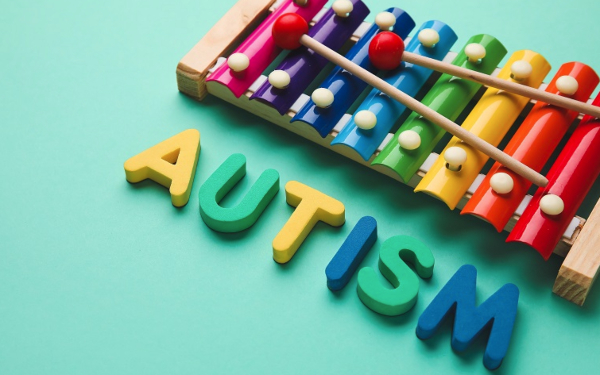
 This article presents a few key pieces of advice from Community Care Inform Children’s guide to working with autistic children and young people, which was published in August 2022. The full guide helps to increase knowledge about autism, and explores what being autistic can mean for the daily experience of a child or young person. It addresses the three “areas of difference” set out in the diagnostic criteria, and provides practical advice for working with children and their families, including how to use the SPELL framework described below. Community Care Inform Children subscribers can access the full guide here.
This article presents a few key pieces of advice from Community Care Inform Children’s guide to working with autistic children and young people, which was published in August 2022. The full guide helps to increase knowledge about autism, and explores what being autistic can mean for the daily experience of a child or young person. It addresses the three “areas of difference” set out in the diagnostic criteria, and provides practical advice for working with children and their families, including how to use the SPELL framework described below. Community Care Inform Children subscribers can access the full guide here.
The guide was written by the National Autistic Society, a charity providing support, guidance and advice for autistic people, their families and loved ones, and professionals.
The SPELL framework
SPELL was created by the National Autistic Society to provide a reminder of best practice when working with autistic children and young people. It is also relevant when working with adults.
SPELL stands for:
- Structure
- Positive approach
- Empathy
- Low arousal
- Links
How to use SPELL in social work practice:
S: Structure
Supporting autistic children to have routines and structure in place can help them with predicting events and understanding environments, organising tasks, and developing autonomy and independence. There are various tools to help, including visual stories, timetables and ‘now, next and then’ boards (see examples here and in the full guide). Not all tools will work for all children, so this needs to be carefully and individually planned and may take some trial and error.
Professionals also need to be structured in their own work. For example:
- Think carefully about how you introduce yourself and explain your role – use clear, straightforward language and avoid jargon, remembering that autistic young people may take things literally or not understand abstract concepts.
- Set clear appointment times for meetings, and stick to them. Turning up either early or late may be equally stressful for a young person.
- Consider using a timetable for the time you will spend together and sharing this with the young person beforehand. This can help reduce anxiety by lessening uncertainty about what to expect during, for example, the assessment or direct work.
- Provide a written summary of what was discussed in a clear format, including, for example, anything that was agreed, what they will do and what you will do.
P: Positive approach
Many autistic people have low self-esteem and mental health challenges (Gillott & Standen, 2007), often as a result of previous negative life experiences, so focusing on boosting wellbeing and helping young people to feel good about themselves is essential.
- Ensure that language used around autism is positive, including the benefits of receiving a diagnosis (such as the person understanding themselves better and others knowing how to best support them).
- Find out what is important to the young person, and highlight their strengths, skills and positive achievements. This can help build their resilience and confidence as they move through life.
- Listening to them talk about their interests can help a child feel comfortable. It also helps boost their self-esteem to know they have knowledge and skills in an area that others might not.
- Giving children time to talk – about both their interests and their worries – can also support positive relationships.
E: Empathy
To effectively support autistic young people and understand their needs, professionals need to try to see things from their perspective, rather than through a neurotypical lens. Remember that everyone will have their own unique experience of being autistic – information and training are guides but we always need to tailor our approach to the individual child.
- This may include ensuring the child knows they can bring something with them to fiddle with if they like, and having pens and paper available in case they would prefer writing or drawing over speaking.
- It may take longer to build a rapport with an autistic child – allow more time for visits and meetings and give children time to talk about their interests.
- Remember that some children may be very eloquent when they feel comfortable, but unable to use spoken language when overwhelmed.
L: Low arousal
The environment and sensory stimulation can affect young autistic people’s ability to feel comfortable and engage with professionals.
- Ensure that the environment for your meeting suits their needs by consulting the young person and parent/carers beforehand.
- Think about keeping things calm and minimising distraction. Consider information you may be adding to the sensory environment such as perfume, jewellery, and patterns and bright colours on clothing.
- Be aware of the volume of your voice.
- Provide breaks for downtime.
- Eye contact should not be forced. Consider sitting side-by-side rather than opposite to reduce a young person feeling under pressure to look at you.
L: Links
Ensure joined-up working around a young person to improve the knowledge and awareness of multi-disciplinary professionals. This starts with a person-centred approach – making sure that young autistic people, their family and carers are meaningful partners in the work.
- ‘Links’ are also about connections with other autistic people. It can be very empowering for young autistic people to hear others’ lived experiences. Identifying positively with others can have a strong positive effect on the mental wellbeing of autistic people (Cage et al 2018).
- Professionals can link with local organisations, perhaps finding social groups connected to the individual’s special interests, or youth groups for autistic teenagers.
- It can also be helpful to signpost parents to peer support networks.
The full guide to working with autistic children and young people includes signposting information to local groups and online communities for young people and parents, and voices of autistic people in different media. If you have a Community Care Inform Children licence, log on to see the full guide, access these and read more detailed information on understanding autism and supporting children and families.





 Assistive technology and dementia: practice tips
Assistive technology and dementia: practice tips  A trauma-informed approach to social work: practice tips
A trauma-informed approach to social work: practice tips 




 Find out how to develop your emotional resilience with our free downloadable guide
Find out how to develop your emotional resilience with our free downloadable guide  Develop your social work career with Community Care’s Careers and Training Guide
Develop your social work career with Community Care’s Careers and Training Guide  ‘Dear Sajid Javid: please end the inappropriate detention of autistic people and those with learning disabilities’
‘Dear Sajid Javid: please end the inappropriate detention of autistic people and those with learning disabilities’ Ofsted calls for power to scrutinise children’s home groups
Ofsted calls for power to scrutinise children’s home groups Seven in eight commissioners paying below ‘minimum rate for home care’
Seven in eight commissioners paying below ‘minimum rate for home care’
 Facebook
Facebook X
X LinkedIn
LinkedIn Instagram
Instagram
Comments are closed.